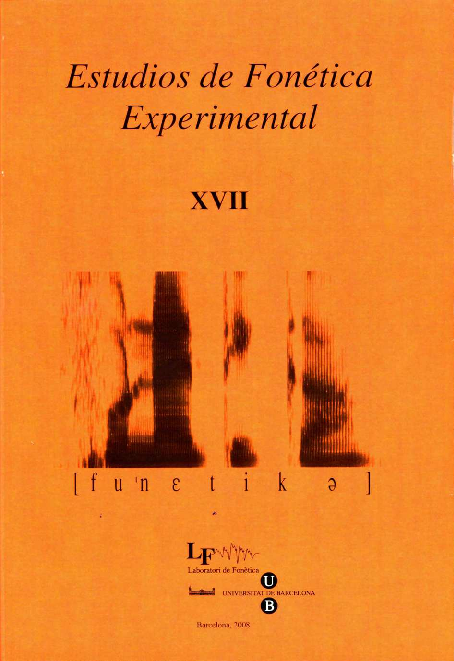La electromagnetometría en el estudio de la producción del habla
Keywords:
electromagnetometry, articulometer, speech productionAbstract
This article presents a brief and simplified description of the electromagnetic midsagittal articulometer (EMMA or EMA) as well as some of the advantages that its use in speech production provides. The articulometer allows us to obtain direct and real-time information of the movement of all the articulators, including the tongue. The articles points out some basic technical aspects and describes the functioning and the standard experimental protocol used with EMMA. The signal obtained from the articulometer gives us the opportunity to study a large amount of reliable and precise quantitative data that can be used to test a great variety of theoretical issues within the phonetics-phonology field. This versatility is illustra-ted here with some results obtained in experiments dealing with different languages. These results provide a picture of the possibilities that the articulometer offers in the study of speech production and of phonetics-phonology in general.
References
PERKELL, J.; M. COHEN; M. SVIRSKY; M. MATTHIES; I. GARABIETA y M. JACKSON (1992): «Electro-magnetic midsagittal articulometer (EMMA) systems for transducing speech articulatory movements», Journal of the Acoustical Society of America, 92, pp. 3078-3096.
ROMERO, J. (2000): «American English flapping and tongue-tip blending», Pro-ceedings of the 5th Speech Production Seminar: Models and Data, Kloster Seeon, Alemania, pp. 101-104.
Downloads
Published
How to Cite
Issue
Section
License

This work is licensed under a Creative Commons Attribution-NonCommercial-NoDerivatives 4.0 International License.
All articles published online by Estudios de Fonética Experimental are licensed under Creative Commons Attribution-NonCommercial-NoDerivs 4.0 International (CC BY-NC-ND 4.0 DEED), unless otherwise noted. Estudios de Fonética Experimental is an open access journal. Estudios de Fonética Experimental is hosted by RCUB (Revistes Científiques de la Universitat de Barcelona), powered by Open Journal Systems (OJS) software. The copyright is not transferred to the journal: authors hold the copyright and publishing rights without restrictions. The author is free to use and distribute pre and post-prints versions of his/her article. However, preprint versions are regarded as a work-in-progress version used as internal communication with the authors, and we prefer to share postprint versions.




